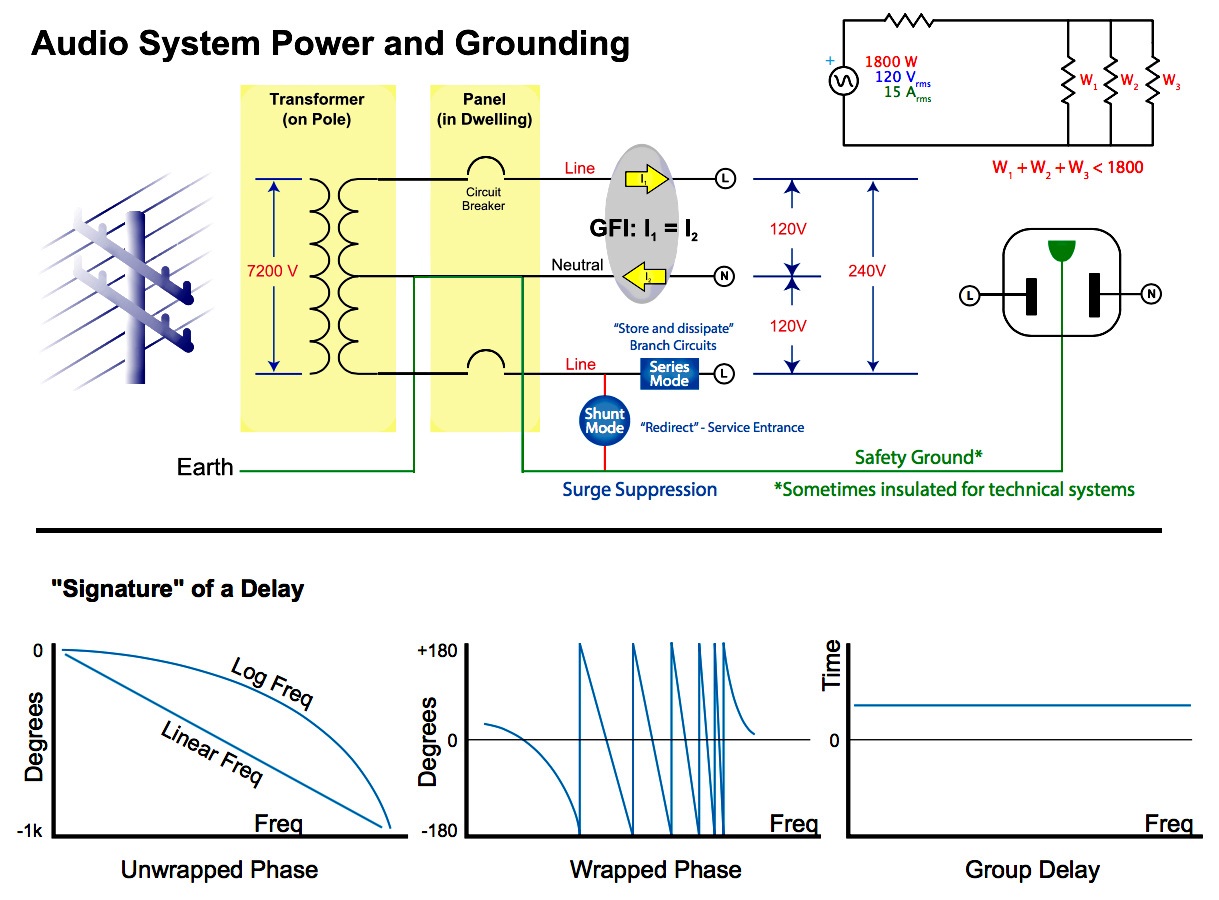
As Pat teaches over the next couple of days, he’ll be writing and scribbling and drawing all over a digital copy that appears on the video screen adjacent to him. I try not to peek ahead on what we may be learning. Although I have a general idea of the topics that will be covered, I want every page turn to be a surprise.
If you’re anything like me, you find great happiness in the little things in life: like a page turn revealing new ways to think about my audio passions. This book is more than 40 pages in length, with plenty of white space to write notes (thank you!). It even includes a welcome letter from Brenda as well as a class-list of attendees with their contact info.
I don’t want to give too much away, but will note that the text starts with the likes of voltage dividers and the importance of impedance, and then continues on to explain decibel scales and the relationships between voltage and power.
One of the things I appreciate is that there are not only metaphorical comparisons but mathematical backing in many of the concepts. Understanding what is happening is essential, but understanding why it’s happening is indispensable.
The manual spends several pages stressing the concepts of grounding and why so many different disciplines refer to them in different terminology. I’m not afraid to admit that despite my love of technology, math, and electronics, some of the basics have flown under my radar for far too long. Many of these topics can be so abstract, which is why this document can end up being your best friend.
Additional topics covered include transfer functions, FIR filtering, and the nuances of measurement techniques – and so between them! Reviewing the contents as I’m writing this has led me to re-discover some things I may have glanced over too quickly during the seminar.
The Learning
The real selling point, however, is the conversation surrounding the manual. At the end of the day, it’s an aid. Pat is the true educator. He explained so many things that aren’t in the text that I wrote down as quickly as possible. It’s so obvious that he cares about the learning process and gives his all to supply his students with the tools they need to do their work, and far more. I wish that all fledgling engineers and techs could experience this education.
Pat offers a few signature sayings, including “It depends.” The answer to nearly any audio question begins with the phrase “It depends.” There are so many variables in this work that there are few absolute answers that extend beyond variability.
He also stressed the difference between objectivity and subjectivity – in our field, we must know when to be subjective (an opinion) and objective (factual). While this seminar focused primarily on the science (objectivity) side of audio, there were definitely times where we simply couldn’t avoid the artistic (subjective) side.
Many more topics were covered in this seminar than I’m able to discuss here, but here’s one that I believe cannot be understated: Just because sound is happening doesn’t mean that it is correct. There are little things here and there done by engineers in the wild, but if you look for scientific explanations of these things, they’re often simply sub-optimal.
For instance, I often see techs deploy Y-cable into an input on a console, which is a big no-no. It will technically work, yes, but it’s not great for the equipment nor will it provide an optimal signal.
In the course, we spent a solid 90 minutes on impedance and direct injection boxes, with Pat stressing that, “We should avoid esoteric solutions.” This is fantastic advice and it also happens to reflect many of my personal beliefs. Why go above and beyond the necessary technology?
Another insight from Pat: “You never get something for nothing. In life, or in audio.” Comical yet quite accurate. We soon passed from decibel definitions, moving on to crest factor and throttling – is it necessary, and if so, to what extent?” Pat emphasized always running the console as optimum as possible while letting the other stages of the signal chain do their job to make the SPL appropriate.
One of my favorite segments of the course covered DSP. It can be a valuable tool, but at least in my career, too often I’ve experienced such poorly-programmed units. We focused on crossovers in particular, which as Pat notes are“numerouno,” the most important part of the picture.
The class discussed and experimented with varied crossover functions, as well as different types of high-pass filters, how to read phase and impulse responses, and proper techniques for system equalization. We covered so many amazing things, which again is why it’s so great to have the manual at our fingertips to help in recalling important details.
